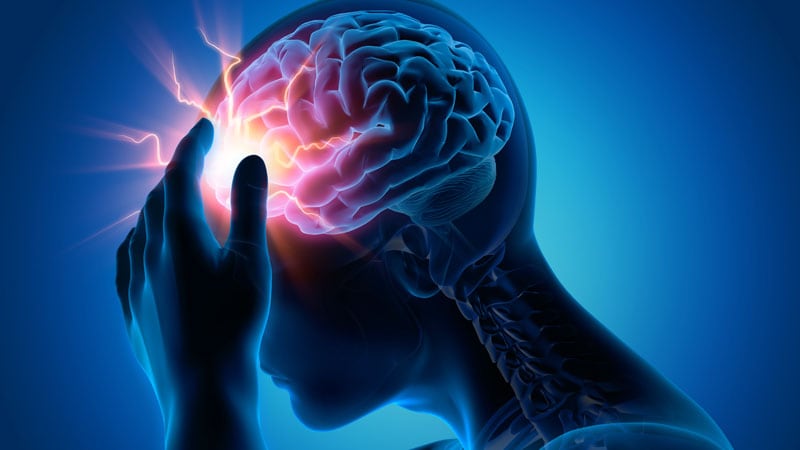Advancements in Migraine Diagnosis and Management
Core Concepts
Advancements in migraine research offer potential for improved diagnosis and treatment.
Abstract
The content explores the role of genetics and brain inflammation in migraine pathogenesis, focusing on the challenges in diagnosis and treatment due to the lack of reliable biomarkers. Key highlights include:
- Importance of Calcitonin Gene-Related Peptide (CGRP) in migraine pathophysiology.
- Challenges in measuring CGRP levels accurately.
- Complex genetics of migraine with over 180 associated gene variants.
- Identification of key proteins and therapeutic targets through genetic analyses.
- Role of neurovascular mechanisms in migraine pathophysiology.
- Rare monogenetic causes of familial hemiplegic migraine.
- Association of migraine with brain inflammation and neuroimmune activation.
- Potential of imaging techniques in understanding migraine phases and etiology.
Customize Summary
Rewrite with AI
Generate Citations
Translate Source
To Another Language
Generate MindMap
from source content
Visit Source
www.medscape.com
Will Imaging Improve Migraine Diagnosis and Management?
Stats
Human CGRP levels are typically measured using enzyme-linked immunosorbent assays (ELISAs), but the kits used for the measurements cannot distinguish between the closely related peptide sequences found in the alpha and beta isoforms of the peptide.
The heritability of migraine is estimated to be about 40%, with more than 180 migraine-associated gene variants identified to date.
Patients with migraine exhibit changes in brain structure and functional connectivity, with reductions in migraine day frequency in response to erenumab treatment associated with changes in resting state functional connectivity.
Quotes
"If we could reliably measure CGRP, there could be great value in the results." - Professor Debbie Hay
"Migraine has different phases, and the interictal phase is the most widely studied. But each phase may potentially have its own imaging biomarkers." - Professor Hülya Karataş
Key Insights Distilled From
by Moheb Costan... at www.medscape.com 12-08-2023
https://www.medscape.com/viewarticle/will-imaging-improve-migraine-diagnosis-and-management-2023a1000upk
Deeper Inquiries
How can the identification of key proteins and therapeutic targets through genetic analyses impact the development of new migraine treatments
Genetic analyses have identified numerous key proteins and novel therapeutic targets related to migraine. By understanding the genetic basis of migraine, researchers can pinpoint specific molecular abnormalities within neurons or cerebral vasculature that contribute to the condition. This knowledge opens up avenues for the development of targeted therapies that address these underlying mechanisms. For example, the identification of gene variants associated with migraine can lead to the creation of medications that target these specific genetic pathways, potentially offering more effective and personalized treatment options for individuals with migraine. Additionally, genetic analyses can help in the discovery of potential diagnostic biomarkers that may aid in early detection and intervention, ultimately improving patient outcomes and quality of life.
What are the implications of the association between brain inflammation and migraine for future diagnostic methods
The association between brain inflammation and migraine has significant implications for future diagnostic methods. Neuroimaging techniques, such as integrated PET/MRI, have shown that individuals with migraine, especially those with aura, exhibit neuroimmune activation and inflammation in specific brain regions. These findings suggest that imaging modalities could potentially serve as diagnostic tools for identifying and monitoring the neuroinflammatory processes associated with migraine. By visualizing changes in brain structure and functional connectivity, clinicians may be able to better understand the underlying mechanisms of migraine and tailor treatment strategies accordingly. Furthermore, the ability to detect and track brain inflammation through imaging could lead to the development of more precise diagnostic criteria and personalized treatment plans for individuals with migraine.
How might advancements in imaging techniques deepen our understanding of migraine etiology and improve treatment outcomes
Advancements in imaging techniques have the potential to revolutionize our understanding of migraine etiology and enhance treatment outcomes. By utilizing higher-resolution imaging and sophisticated data analysis methods, researchers can delve deeper into the structural and functional changes in the brain that occur during migraine attacks. These imaging biomarkers may help differentiate between different phases of migraine and provide insights into the underlying mechanisms driving the condition. Integrating imaging into routine clinical practice could enable healthcare providers to make more informed decisions regarding diagnosis, treatment, and monitoring of migraine patients. Ultimately, improved imaging technologies may pave the way for more targeted and effective therapeutic interventions, leading to better outcomes for individuals living with migraine.
0
